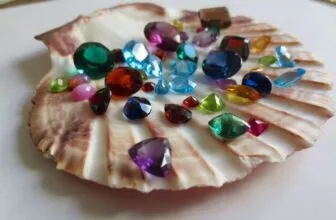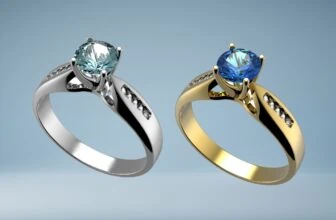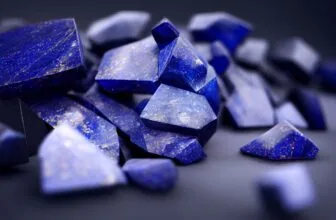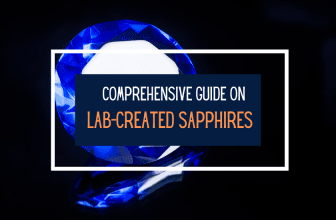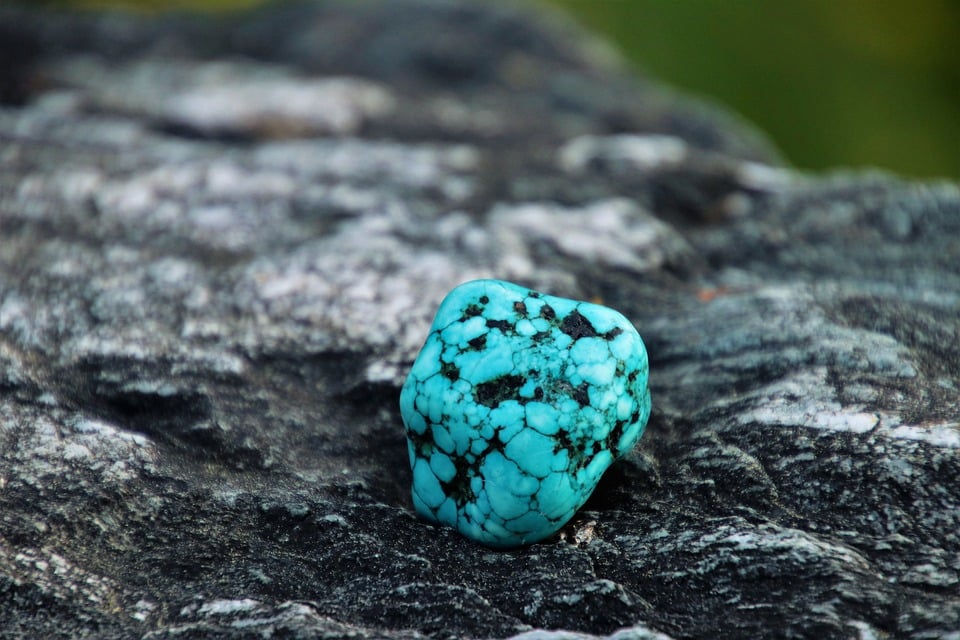
Table of Contents
Howlite, a captivating gemstone with a unique allure, has fascinated jewelry lovers and collectors alike. Known for its striking white color laced with intricate grey or black veins, howlite exudes a serene and elegant charm. Beyond its beauty, this gemstone is also cherished for its supposed calming properties.
Let’s take a closer look at howlite, exploring its characteristics, origins, and what to consider when adding this mesmerizing stone to your collection.
What is Howlite?
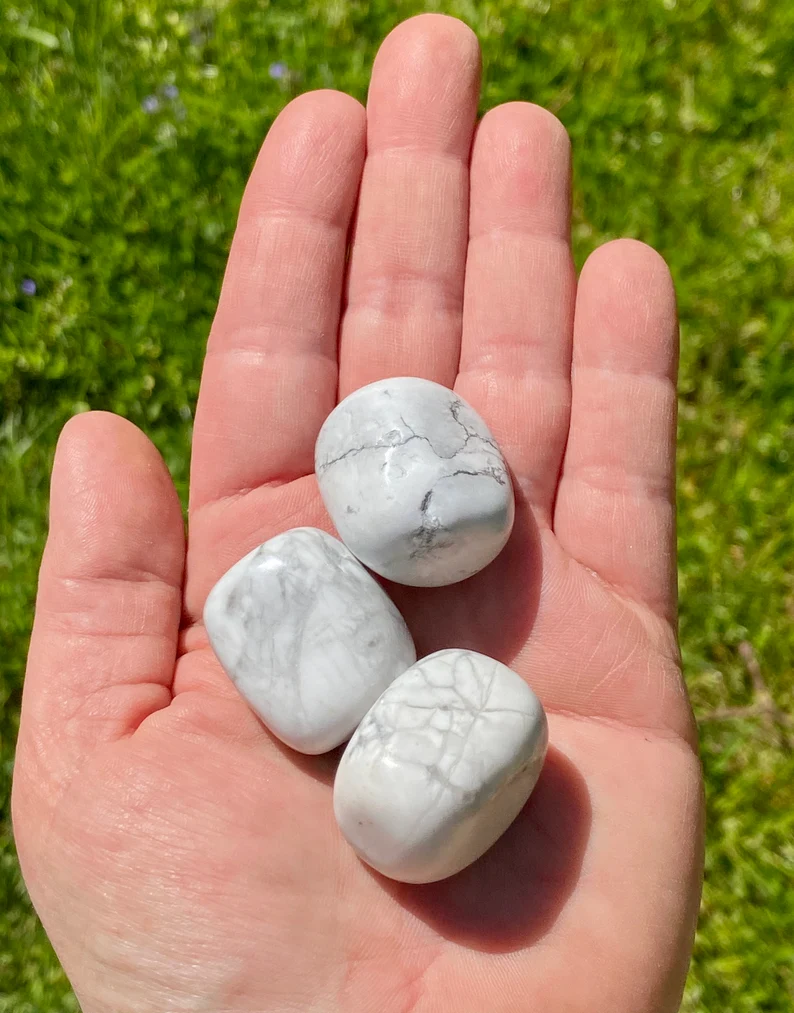
Howlite, discovered in 1868 by Henry How, a Canadian geologist, is a mineral known for its eye-catching look and special qualities. Mainly found in evaporite deposits, it often appears with borate minerals. This mineral usually has a white or light grey color with a porous texture and unique grey, black, or brown web-like veins, giving it a marbled look. This makes it a favorite for jewelry and decorative pieces.
Howlite is versatile, especially in mimicking other gemstones like turquoise, thanks to its ability to absorb dyes well. This is because of its porous nature, offering a less expensive option for those who want the appearance of more luxurious stones without the high cost.
In short, howlite stands out not just for its unique appearance but also for its calming properties and its use as an affordable alternative to more expensive gemstones.
How to Evaluate Howlite Quality
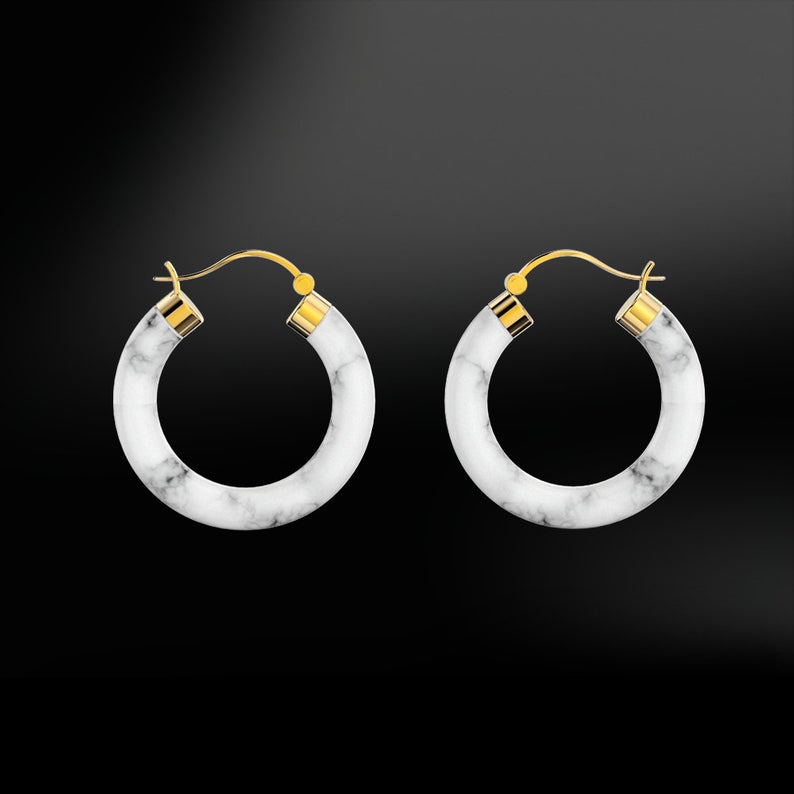
To judge the quality of howlite, look at several key aspects. The color and appearance are crucial. High-quality howlite usually has a bright white or light grey base with a smooth, shiny surface. It should have grey, black, or brown web-like veins that are clear and evenly spread, giving it a marbled appearance. The more even and detailed these veins, the better the quality.
The texture and porosity of the stone also matter. Good howlite has a consistent, porous texture, important for dyeing. But too much porosity can make the stone weak. It should feel strong and not crumble easily.
The stone’s transparency is another point to consider. Howlite is mostly opaque, but some translucence is often seen as more attractive because it enhances the stone’s shine and makes the veins more visible.
When looking at dyed howlite, especially those mimicking other stones like turquoise, check that the dye is evenly applied and doesn’t spread outside the veins. The color should also be stable and not fade over time. The best howlite strikes a balance in color, clarity, texture, and strength, making it both good-looking and functional for jewelry and decor.
How Does Howlite Get Its Color?
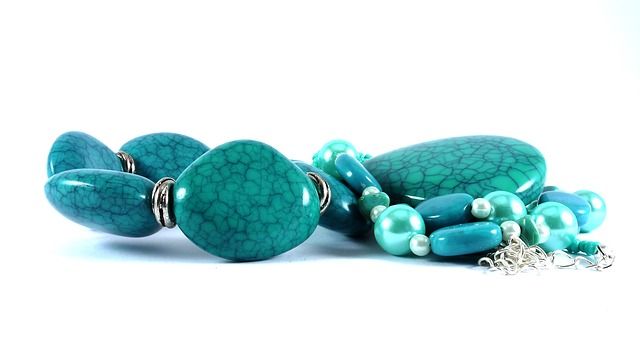
Howlite is usually white or light grey with a marbled look from its grey, black, or brown veins. These colors come from its makeup of calcium borosilicate hydroxide and other minerals and impurities mixed in during its formation.
This mix gives each howlite piece a unique pattern. Its natural colors make it visually striking and also great for dyeing. The stone’s porousness lets it absorb and hold dyes well, so it’s used in a variety of decorative items and jewelry.
How Valuable is Howlite?
As an opaque gemstone mineral, howlite isn’t too expensive or highly valued by the jewelry industry. However, that doesn’t mean that it’s without its qualities and that there aren’t howlite variants that are highly valued.
Howlite pieces are often valued for their subjective qualities – individual stones with veiny patterns that form rather unique shapes and curves, or cloudy forms within the mineral are what usually grab the attention of jewelers and customers alike.
Does Howlite Have Inclusions?
Howlite naturally contains inclusions, which give it a unique look. These inclusions appear as web-like veins, usually grey, black, or brown, against the stone’s white or light grey base. They form from other minerals and impurities present in the howlite as it crystallizes.
Far from being flaws, these inclusions are a sought-after feature, creating a marbled appearance that makes each howlite piece distinct. These patterns make howlite easy to identify and highly valued, whether it’s raw or polished.
Each howlite piece varies greatly in the presence and pattern of these inclusions, leading to a wide array of looks within the mineral, and making every piece uniquely different.
How is Howlite Cut?
Howlite is cut using specific lapidary methods due to its softness, scoring around 3.5 on the Mohs scale. Lapidaries first use a diamond saw to cut the raw howlite into smaller, workable pieces. They then shape and refine the stone with grinding wheels and sandpaper.
The goal of cutting is to highlight howlite’s natural marbled patterns and veins. For this, cutters often choose smooth, rounded cuts like cabochons, which they polish into a dome shape to show off the stone’s unique inclusions and beauty.
Howlite can also be cut into beads or decorative shapes for jewelry, focusing on its natural marbled look. Cutting and shaping howlite involve both technical skill and artistic judgement to bring out the best in the stone’s natural features.
How to Choose Howlite Jewelry
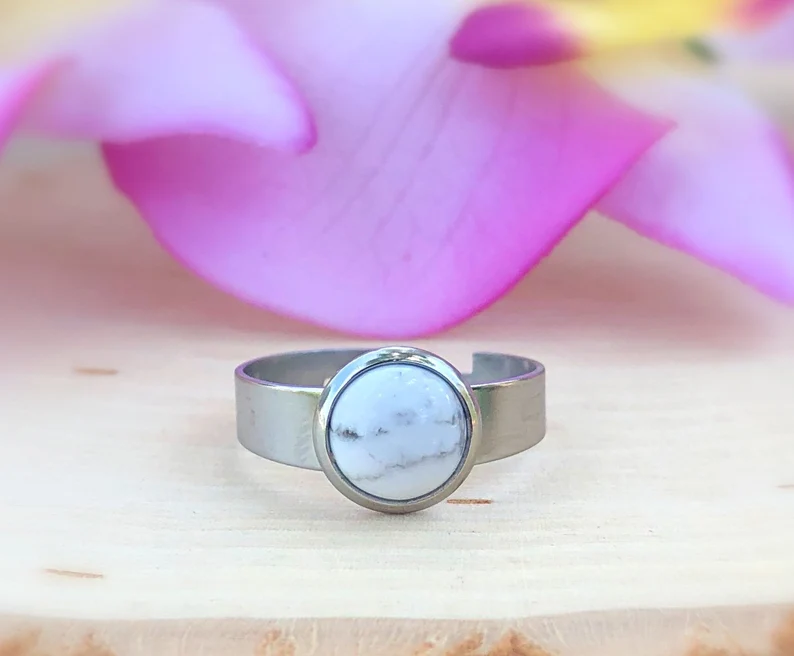
Howlite is typically carved into beads or cabochons and made into standard jewelry types. For a bohemian look, howlite bead bracelets and necklaces are popular.
However, when crafted beautifully and paired with high-quality materials, howlite suits high-end fashion jewelry as well.
Howlite is rarely used for rings, especially in engagement rings, because of its softness. It’s best in jewelry not meant for daily wear.
Because of its white milky color, as well as the many different dyes it can be painted with, howlite works very well with all kinds of metals and other gemstones – silver and gold can both make excellent companions to howlite gemstones.
In terms of price, howlite is quite inexpensive which is excellent if you’re not one to value price as a measurement of a jewelry piece’s quality. If instead, you’re looking for a gorgeous and different type of gemstone for your jewelry, howlite can be both an excellent and a budget-friendly alternative to many other materials.
Howlite as a Stone for Ornaments
Howlite is a very versatile gemstone that can be used in different ways. For starters, it’s very famous as an ornamentation stone. You can easily find lots of figurines, statuettes, and simpler shapes such as peace signs, skulls, stars, hearts, and others, made of howlite.
The reason why howlite is so popular as an ornamentation stone is that it’s very malleable, soft, and easy to craft, as well as that its highly porous surface makes it easy to dye in many different colors.
Howlite vs. Turquoise – How to Tell the Difference
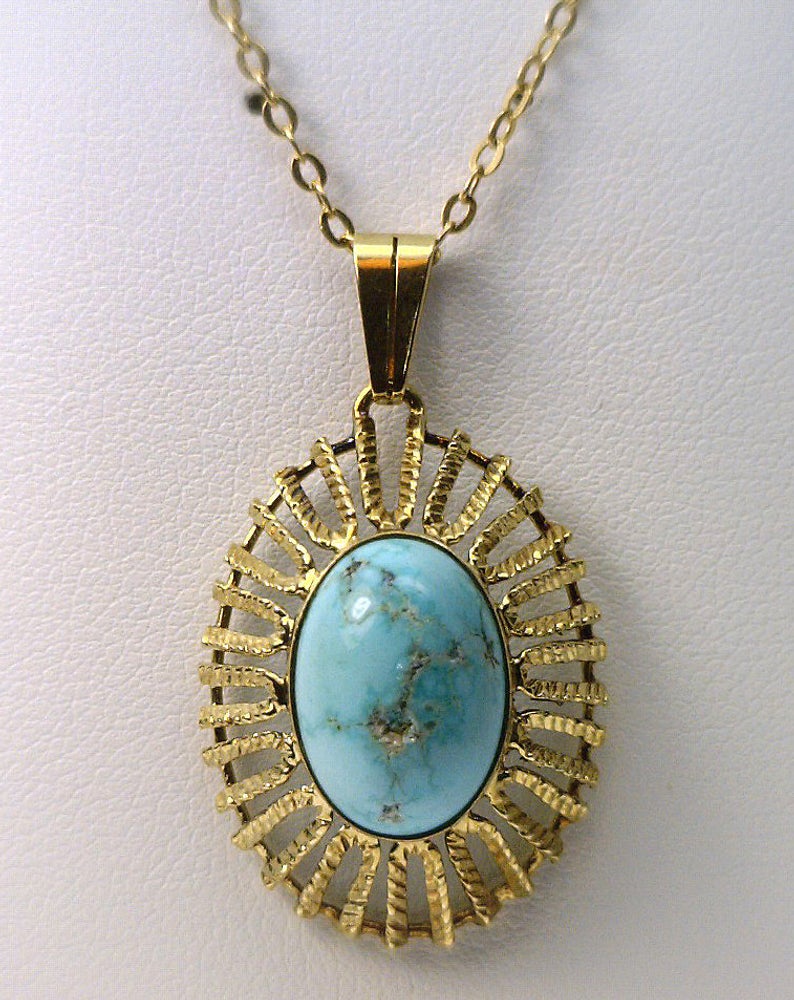
Howlite itself may not have any imitators but because of its porous nature, it can easily be dyed and used as an imitation for other gemstones.
The most popular victim of that is turquoise which howlite can easily be made to resemble using a simple, light-blue dye. And that’s not an insignificant concern – up to 90% of the turquoise sold on the market today is believed to actually be dyed howlite.
The reason for this is quite simple – howlite is much cheaper to produce than turquoise so dishonest jewelers can make a great profit through this imitation. The reason howlite can resemble turquoise so easily is not just in the fact that it can be dyed in the turquoise’s Robins eggs blue but because both gemstones have a web-like darker matrix running through them. This dark webbing is quite difficult to fake unless the base mineral already has it – which howlite does.
So, how to tell the difference between turquoise and the much cheaper dyed howlite? Here are several basic observations to look out for:
- Turquoise’s webbing is made from the leftover remains of the host rock formations in which turquoise grows. Over time this matrix erodes – unlike howlite’s webbing – so if you’re being sold a rough turquoise piece you can run your finger on its surface and check whether it’s uneven where the webbing is. if it’s uneven then it’s most likely turquoise. Of course, it can still be turquoise even if it’s smooth, so this isn’t a guarantee.
- Turquoise is not a very hard gemstone but it’s still significantly harder than howlite. Where howlite has a hardness of 3.5 on the Mohs scale, turquoise is at 5-6. Unfortunately, it’s hard to tell the difference on the spot without professional equipment but if you notice that your “turquoise” stones scratch too easily, then they are most likely howlite.
- Check the color’s stability. Unfortunately, this method involves compromising the stone’s surface – take a piece of cotton and dip it in acetone (nail polish remover). Run the cotton on the stone’s surface – if the cotton wipes away some of the stone’s blue color then it is artificially dyed howlite.
- Lastly, mind the price. Most so-called “turquoise” jewelry pieces include perfectly matching blue turquoise beads at an acceptable price. This is usually too unrealistic and the stone is actually dyed howlite. It is actually very difficult and rare to find multiple turquoise pieces that match perfectly in color, so, for a genuine turquoise necklace of perfectly matching beads the price will typically be very high.
Howlite Value and Rarity
Howlite is neither the rarest nor the most expensive mineral out there. However, that doesn’t mean it’s without value. Even if we exclude all the ways it can be used as an imitation for other gemstones, howlite itself is quite a beautiful and attractive gemstone too.
However, howlite jewelry is typically very affordable and most pieces come under $50. Depending on the materials used, brand, and quality of workmanship, howlite jewelry can cost from a few dollars to upwards of $100.
How to Clean and Care For Howlite
The chief concern when taking care of howlite is how soft it is. With a hardness of just 3.5 on the Mohs scale, howlite can be scratched very easily.
This means that you should never store it side by side with other gemstones, metals, or jewelry pieces as they will almost certainly scratch it over time. Additionally, it also means that even plain old household dust will scratch it over time so it’s important to keep your howlite pieces dust-free.
Never use anything stronger than the mildest of soaps, warm water, and a soft piece of cloth when cleaning howlite. You should be extra careful especially if the stone is dyed– most cheap dyes can be washed away just with hand soap.
Howlite Meaning and Symbolism
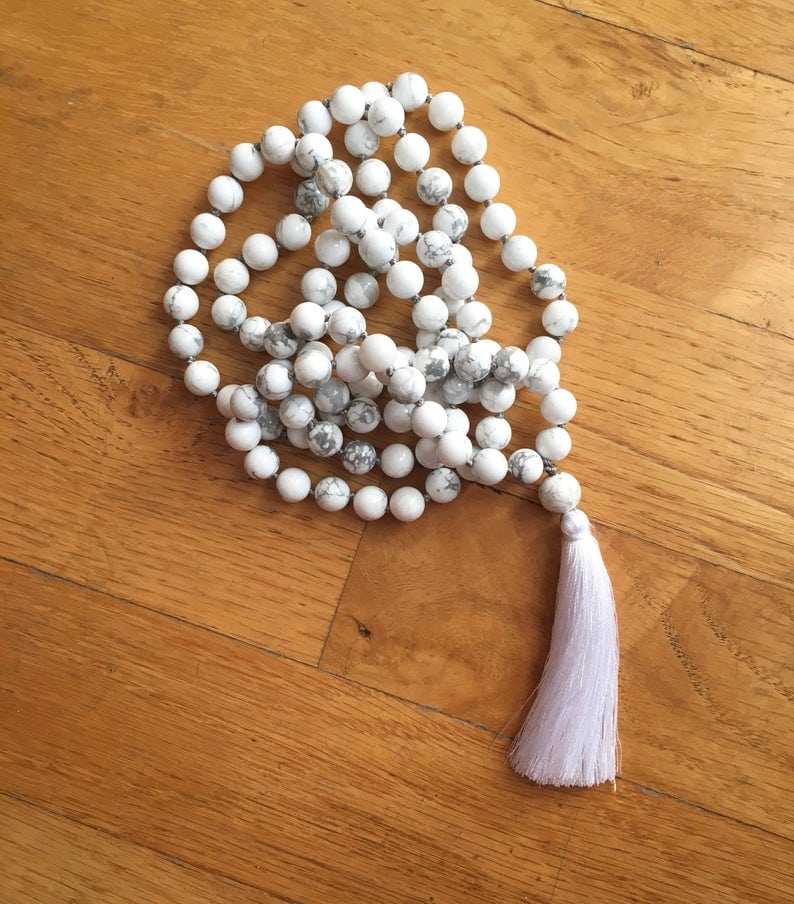
Howlite is more than just a pretty stone; it holds deep meanings and symbolism in many cultures, particularly in metaphysical beliefs. People often see it as a symbol of tranquility and awareness. It’s believed to be a calming stone that helps reduce stress, anxiety, and tension. This effect comes from its supposed ability to soak up negative energy and promote a peaceful mind, making it a popular choice for meditation and relaxation.
Symbolically, howlite is thought to help with expressing emotions and improving communication. It’s said to assist in understanding and articulating feelings, leading to a more peaceful and insightful life. Many also believe howlite boosts creativity and inspires new ideas, which is why artists and creative people favor it.
Howlite is often used for personal awareness, helping people understand their emotions and overcome negative behaviors. It symbolizes personal growth, self-awareness, and the quest for a more mindful, balanced life. These meanings and symbols give howlite significance beyond its physical beauty, making it an important stone in spiritual and emotional healing.
Wrapping Up
Howlite goes beyond its striking marbled look; it holds deep meaning and importance in spiritual beliefs. Known for its calming effects, helping with emotional expression, and sparking creativity, howlite is more than just a gemstone. It’s a tool for personal growth and mindfulness, making it a valuable addition to any collection. Howlite represents a perfect blend of natural beauty and spiritual depth.


